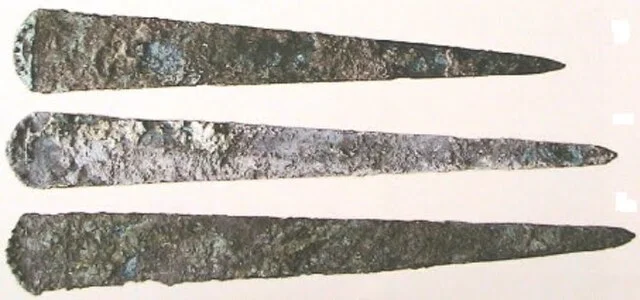The Hypogeum of Sant’Iroxi is an important archaeological site in Sardinia, Italy. This burial site, dating back to the late Neolithic period, provides key insights into Sardinian prehistoric cultures. Located near the modern town of Decimoputzu, it reveals evidence of early funerary practices in the region.
Get your dose of History via Email
Historical Context
The hypogeum dates from the 3rd millennium BC, a time when Sardinia was home to several Neolithic cultures. These societies used underground burial chambers to honor the dead. The Sant’Iroxi site is part of this long-standing tradition, which continued into the Nuragic civilization.
Architectural Features
The Hypogeum of Sant’Iroxi consists of subterranean chambers carved directly into the rock. These chambers were used for collective burials, a common practice in prehistoric Sardinia. The architecture is simple, with rounded walls and low ceilings, reflecting the functional nature of the burial spaces. Tools used to carve the chambers suggest the early use of metal tools, hinting at technological advances during this time.
Burial Practices
Excavations revealed that the site was used for multiple burials. Archaeologists found human remains, along with grave goods such as pottery, tools, and ornaments. These artifacts provide valuable information about the burial rituals of the Neolithic people of Sardinia. The goods likely served both practical and symbolic purposes, indicating a belief in an afterlife.
Significance in Sardinian Prehistory
The Hypogeum of Sant’Iroxi offers a direct link to the island’s prehistoric past. It showcases the early development of communal burial practices. Additionally, the site highlights the technological advancements of the time, including the use of metal tools. Archaeological studies suggest that these practices were precursors to the more complex burial traditions of the later Nuragic culture.
Archaeological Investigations
Systematic excavations began in the 20th century. Archaeologists uncovered evidence of long-term use of the hypogeum, suggesting it served several generations. Further analysis of the human remains and grave goods helped archaeologists understand the social and economic status of the people buried there. The presence of imported materials indicates trade networks that connected Sardinia to other Mediterranean cultures during the Neolithic period.
Conclusion
The Hypogeum of Sant’Iroxi is a crucial site for understanding Sardinian prehistory. Its well-preserved architecture and artifacts shed light on the burial practices and social structures of Neolithic Sardinia. Moreover, its discovery continues to inform researchers about the early use of metal and the island’s connections with neighboring regions. This site remains an important focus for ongoing archaeological research in the Mediterranean.
Source:

